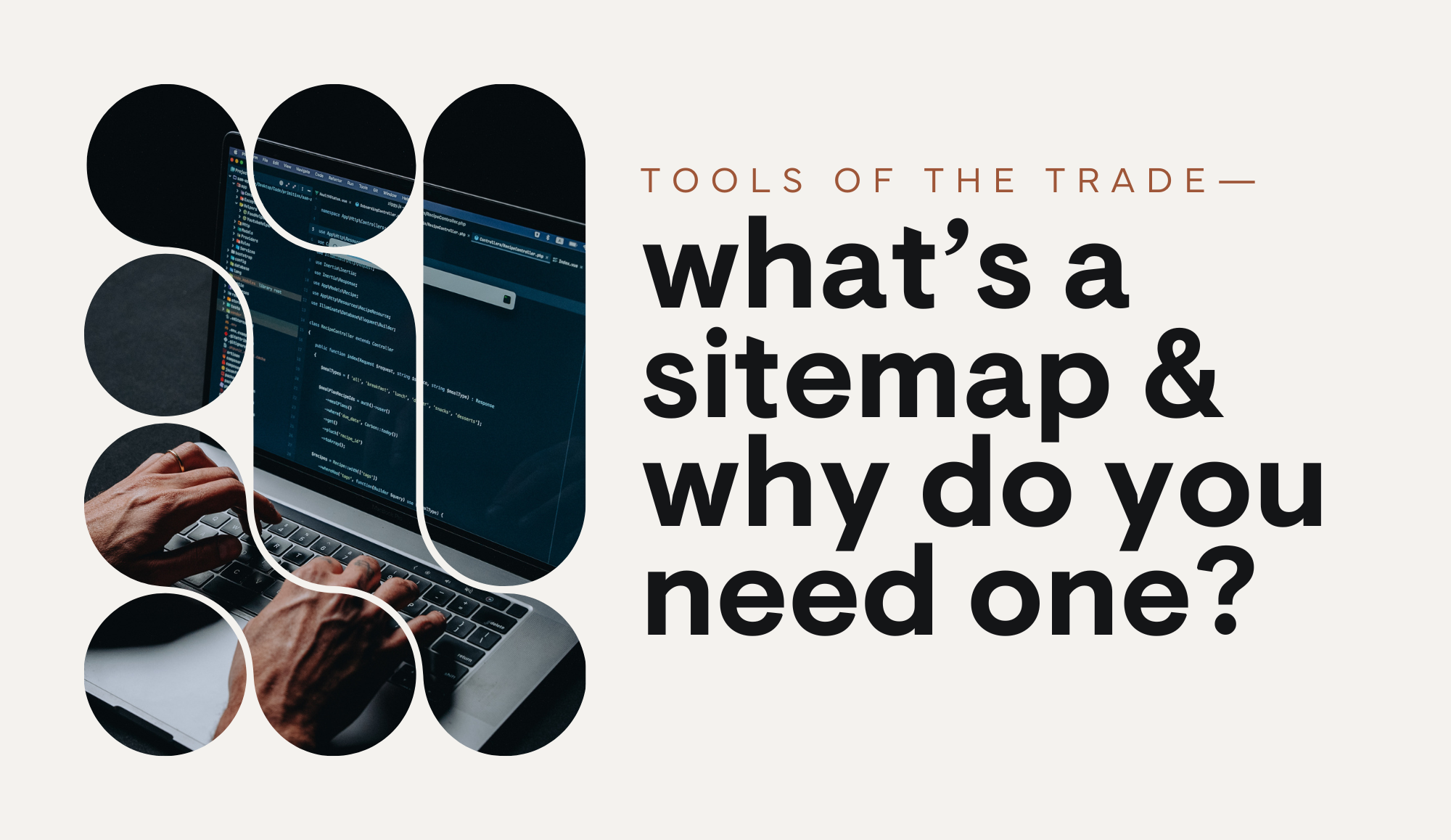BLOG What's A Sitemap & Why Do You Need One?
What's A Sitemap & Why Do You Need One?
POSTED BY Brittany Lewis | May 14, 2024

The Newbies' Guide to a Sitemap & Why You Need One
Terms like "Sitemap," "HTML," and "XML" might sound like jargon reserved for tech experts. But for those who are diving head first into the world of websites to grow their small business or startup, it's time to lean in and take notes. Understanding the need for sitemaps in your website can help generate new leads and establish a well-known brand.
A Sitemap Defined
If you are just learning, you should know that designers, marketers, or users may use that term in different ways because there are three different types.
The Visual Sitemap
Before a website is released to the web, it starts as an idea or, more likely, many ideas. Those thoughts have to be captured and mapped out in a way that makes sense to those designing the website. So, designers typically create a visual sitemap to help them understand how the content they are creating fits together as they plan the site structure.
From there, our content strategists and web designers group the ideas for the site’s content in a way that is meaningful to the user. Using a visual sitemap is a proactive approach that ensures user-friendliness. It helps organize thoughts and ideas so that the web design and content can be communicated from its beginning to its final launch date.
XTML & HTML Sitemaps
XTML and HTML are each valuable structures. They can operate like a table of contents helping people and robots navigate information on your site and land on the content they are looking for. Both HTML and XTML are used to increase searchability. However, they look different and do different things.
Crawler-geared XTML
This is a functional XML file on a website that helps search engine crawlers build a list of pages to index. While some smaller sites can get by without XTML sitemaps, it’s not ideal. Imagine Google "crawlers" creeping through your site. They are robots, and if they don’t have correct guidance, they may miss important pages and content without an XTML Sitemap.
User-friendly HTML
This kind of sitemap is a literal page on your website that lists all of the important pages and their hierarchy within the site. When you think of an HTML sitemap, think "user-friendly." At its inception, this type of sitemap is intended for user use so that they can better understand the structure of the site they are exploring.
| XTML | HTML |
| Created for bots Written in XML code Functional XML file on a website Not designed for user readability Helps search engines find & index pages quickly |
User intended
Created in HTML & displayed as webpages
Designed for user-readability but helpful for SEO
Provides structured list of pages linked within the site
|
Gain Visibility & Convert Traffic
If your goal is website visibility, listen up. Organic web traffic starts with being seen. Without awareness, no one will click on your site. They won't even know it's there! Search engines are your website’s ally. That’s where SEO is crucial for generating web traffic and boosting ROI.
Obstacles to a Solid SEO Ranking- Broken links
- Incorrect URLs
- Duplicate content
- Redirect chains & loops
SHARE THIS POST:

About the writer, Brittany Lewis
Brittany is a copywriter at Primitive and enjoys connecting with people, exploring new ideas, and expressing thoughts through written language almost as much as she loves a latte. As a Texas Tech University graduate, she is a Red Raider through and through. She graduated with honors in 2009 with a Bachelor of Arts in English. Since then, she has spent a large part of her career in the field of education, teaching English to secondary students and working in early childhood programs.
